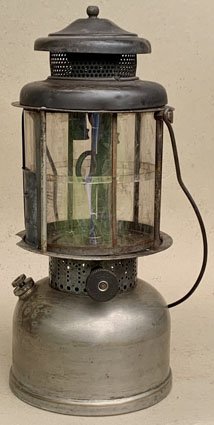
Nostalgic Family Camping Trips
Imagine a family camping trip in the late ’60s. As the sun sets and the night chill sets in, Dad pulls out the trusted Coleman lantern. After a few pumps, he ignites it. The familiar hiss and warm, steady glow bring comfort and a sense of adventure. This scene, a cherished memory for many, captures the simpler times when family outings meant unplugging and reconnecting around the campsite.
The Coleman Lantern’s Legacy
Introduced in the early 20th century, the Coleman lantern has been a steadfast companion for campers and outdoor enthusiasts. Its design has evolved, but its essence remains the same: a reliable light source. During the ’50s and ’60s, these lanterns became synonymous with American outdoor culture, symbolizing exploration and the great outdoors.

Reliable Light Source
The original Coleman lanterns used white gas, or Coleman fuel, to provide a bright and steady light. Prized for their durability and efficiency, these lanterns often set the backdrop for ghost stories, family meals, and quiet reflection under the stars.
Outdoor Activities Surge
In the mid-20th century, outdoor activities surged in popularity. Families packed their station wagons and headed to national parks, beaches, and campsites, seeking respite from urban life. The Coleman lantern became a staple of these trips, illuminating campsites and embodying post-war optimism and the burgeoning middle class’s love for recreation and nature.

Symbols of Freedom and Adventure
More than practical tools, the lanterns became cultural symbols of freedom, adventure, and the joy of simpler pleasures. As suburban life expanded, so did the yearning for the great outdoors, and the Coleman lantern was there, lighting the way.
A Warm Reminder
The story of the Coleman lantern reminds us of a less complicated era when the call of the wild was just a weekend away. It’s a tale of ingenuity and tradition, where the same tool used by grandparents might still guide new generations on their adventures.






